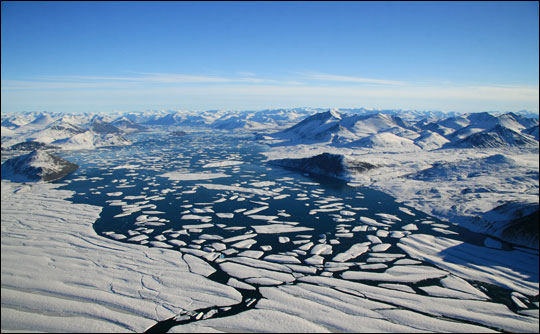Habitat
Harp seals tend to spend relatively little time on land; rather they
seem to enjoy spending most of their time in the waters of the northern
Atlantic and Arctic oceans. They are considered to be semi aquatic
marine mammals because of the extent to which they spend their time in
the water. A seal can spend approximately 15 minutes submerged without
having to come back up for air. They conserve oxygen by lowering
the heart rate by 90%; only the nervous system and sense organs receive
a normal flow of blood.
The harp seal can be found in one of three separate populations, all of
which have their own specific breeding zones. The first population is
found off the coast of east Canada, second in the “east ice” of eastern
Russia in the White Sea, and the third in the “west ice” of eastern
Greenland. However, harp seals migrate when it is not breeding season.
After this whelping season (giving birth), adult seals go north of the
breeding zone in order to undergo their annual molt. Subsequently they
migrate for arctic summer feeding grounds in the north. It is not
atypical for a seal to migrate 2500 miles away from their breeding
grounds; they are very good at navigating.
the “east ice” of eastern
Russia in the White Sea, and the third in the “west ice” of eastern
Greenland. However, harp seals migrate when it is not breeding season.
After this whelping season (giving birth), adult seals go north of the
breeding zone in order to undergo their annual molt. Subsequently they
migrate for arctic summer feeding grounds in the north. It is not
atypical for a seal to migrate 2500 miles away from their breeding
grounds; they are very good at navigating.
All harp seals are confined to the wintery climates of the arctic. Along
with these seals, some typical organisms that can be found in this area
are caribou,
arctic fox, musk ox, arctic hare,
beluga whale,
orca,
polar
bear,
sea otter, walrus and many, many more,
including humans.

The purple areas on the globe are common locations for harp seals to be
found.
To learn more about human to harp seal interactions, follow this
link! INTERACTIONS
